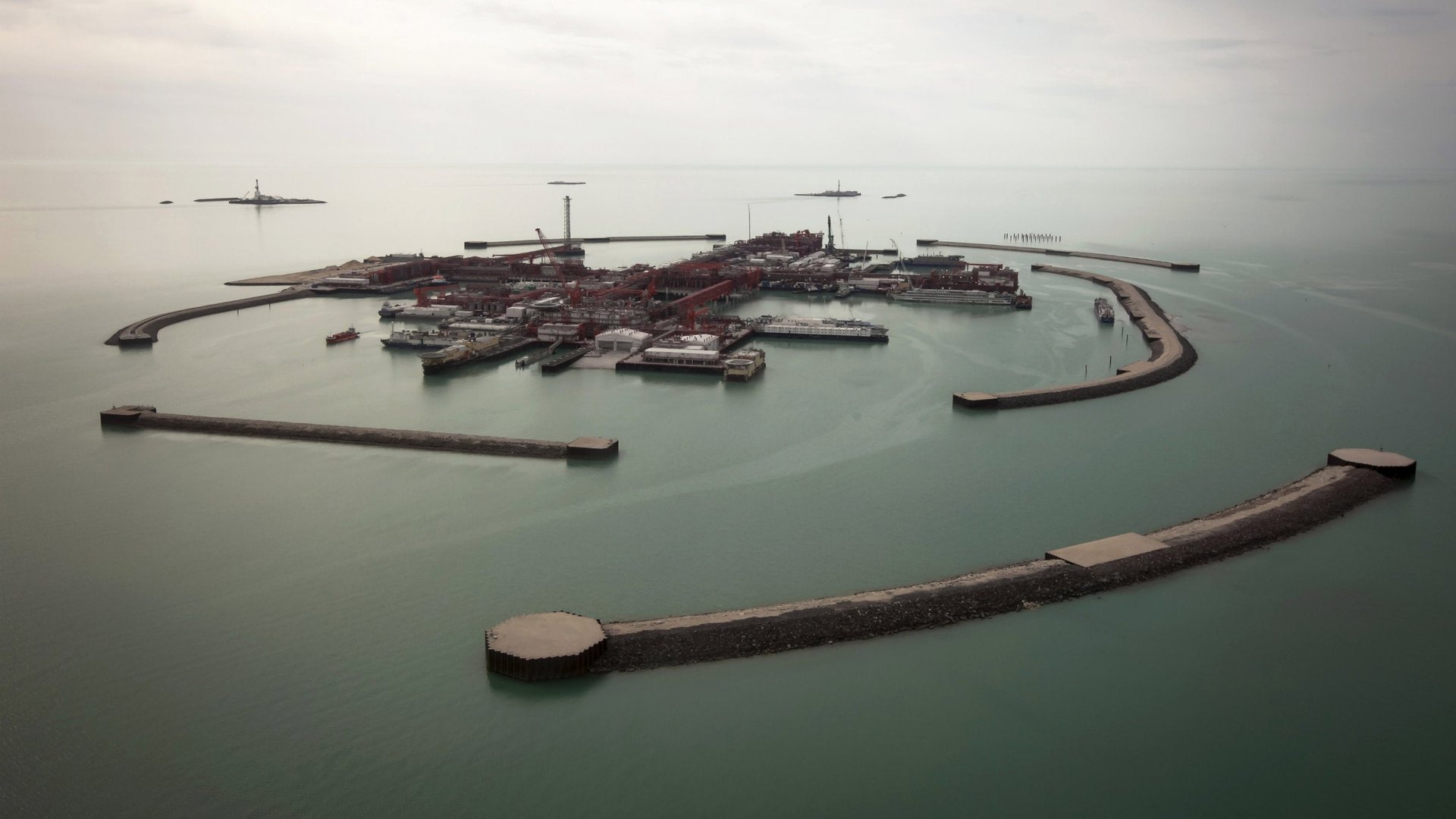The first oil flows from the biggest headache in the world
Perhaps no field in the world has so vexed oilmen as Kashagan. The world’s biggest oil companies—Shell, BP, ExxonMobil, Italy’s Eni and others—have stumbled again and again while developing this offshore Kazakhstan super-giant, the second-largest oilfield on the planet. Eight years after promising to be done, they still had not produced a teaspoon of oil.


Perhaps no field in the world has so vexed oilmen as Kashagan. The world’s biggest oil companies—Shell, BP, ExxonMobil, Italy’s Eni and others—have stumbled again and again while developing this offshore Kazakhstan super-giant, the second-largest oilfield on the planet. Eight years after promising to be done, they still had not produced a teaspoon of oil.
But today—two decades after Kazakhstan gathered these foreign companies into an exploration consortium—oilmen finally pumped out Kashagan’s first crude.
The companies did not disclose the rate at which they are drawing oil from Kashagan—given their sorry history with the field, it is probably a cautious dribble. They have said only that they aim to ramp up initially to 180,000 barrels a day, and later in this first phase of development to 370,000 barrels a day.
That is a fraction of the 1.5 million barrels a day that oilmen expect from the field at its peak. But in a way it is a triumph. According to the companies, the main troubles with Kashagan have been three-fold—its high content of poisonous hydrogen sulfide, the enormous pressure underneath its salt dome, and its location under just 9 meters (30 feet) of water in the Caspian Sea. On top of this, the Kazakh government has threatened serious repercussions should there be any environmental problems; it has not spelled out the punishment, but has hinted that the contract itself could be in jeopardy.
Yet for all those hindrances, the puzzle has been that Kashagan is not the only place the companies have faced such challenges. In Kazakhstan itself, Chevron, ExxonMobil and Eni for years have been pumping oil and gas from two other supergiants in the same carboniferous zone under similar conditions—Tengiz and Karachaganak.
So why the long delay? When you are alone in a bar with American or British oilmen, they tend to blame Eni, the field operator, who they assert has not been up to the task (something that the Italians, when you get them in the bar, hotly deny). In 2008, the other partners forced Eni to relinquish operatorship of the field’s advanced phases to ExxonMobil and Shell.
Then last year, ExxonMobil and Shell threatened to pull out of the field entirely unless they were ceded even more control. They also want a production-sharing agreement that lasts until 2041 to be made 20 years longer; under the terms of this deal, the oil firms can recover most of their costs before giving oil revenues to the government. Analysts said that capital spending has so swelled—field expenses doubled to about $48 billion just for the first phase—that the companies won’t earn enough unless they can continue past 2041. At least so far, the Kazakhs have conceded to neither demand.
Industry consensus has been that the consortium will never get the most out of Kashagan. It is said that the costs are too high, Kazakhstan too remote and the competition for capital spending too intense from other parts of the world. But a competing narrative is that such talk has reflected emotion in the heat of the trouble—and that once production actually started, tempers would moderate, and sensible talk about the next steps would begin.
That could happen. The flow of some $37 million a day in income (at today’s prices) can rapidly improve one’s mood. But greed is also a byproduct of such bonanzas. Kashagan’s future is in the balance in between.